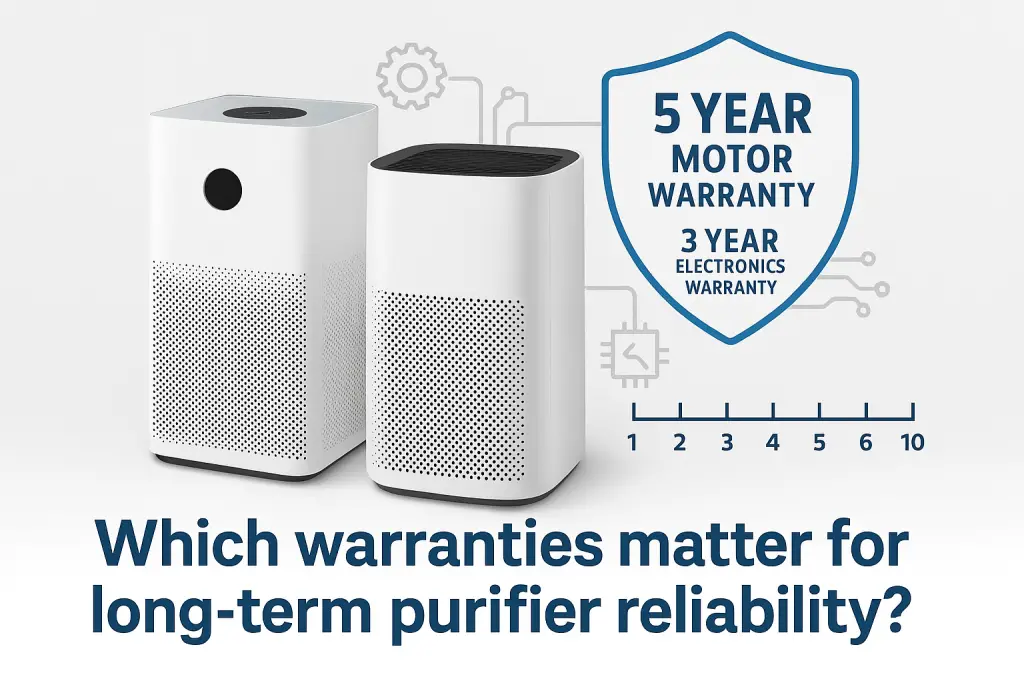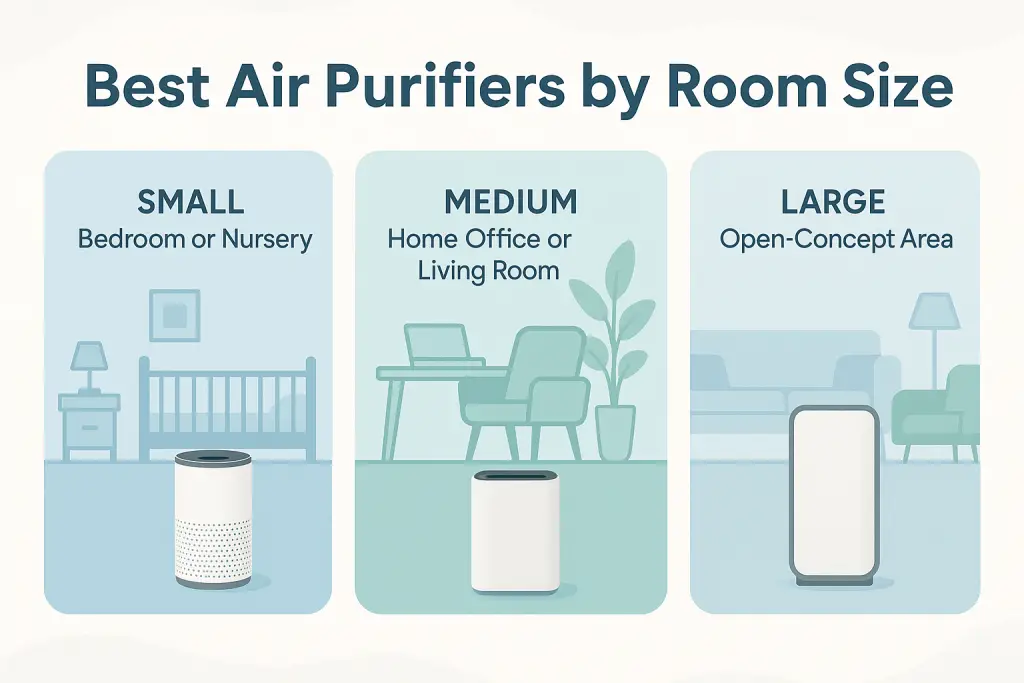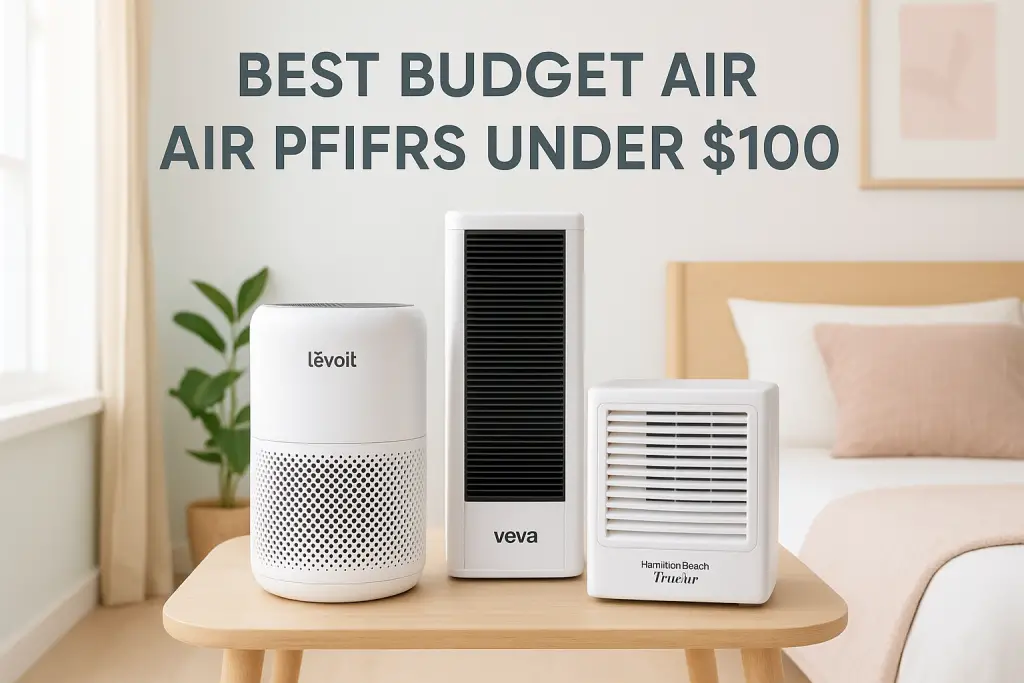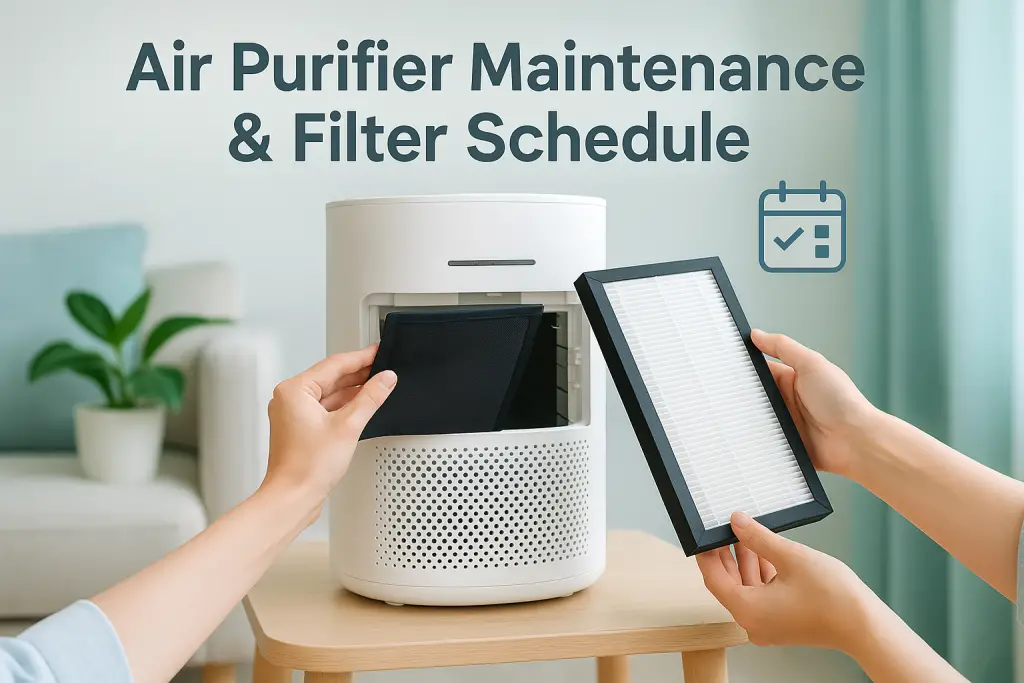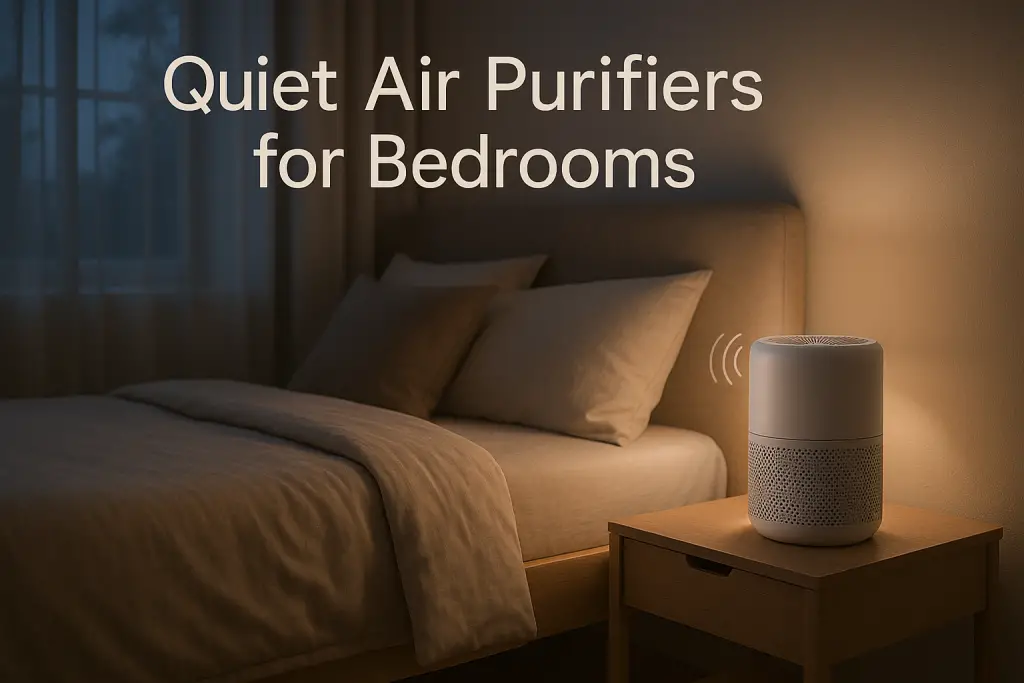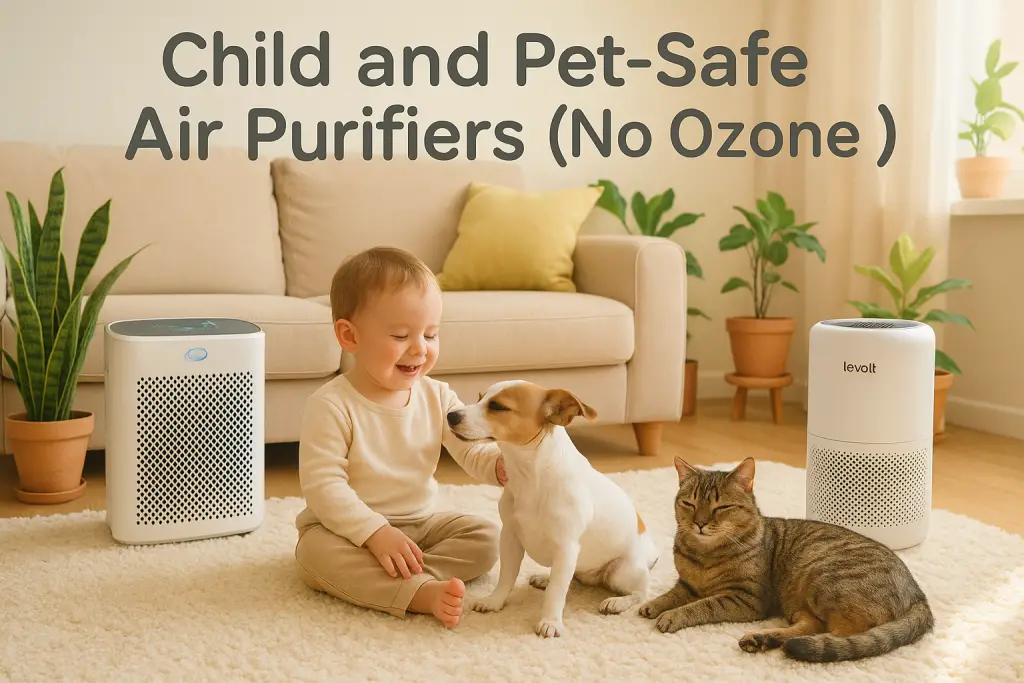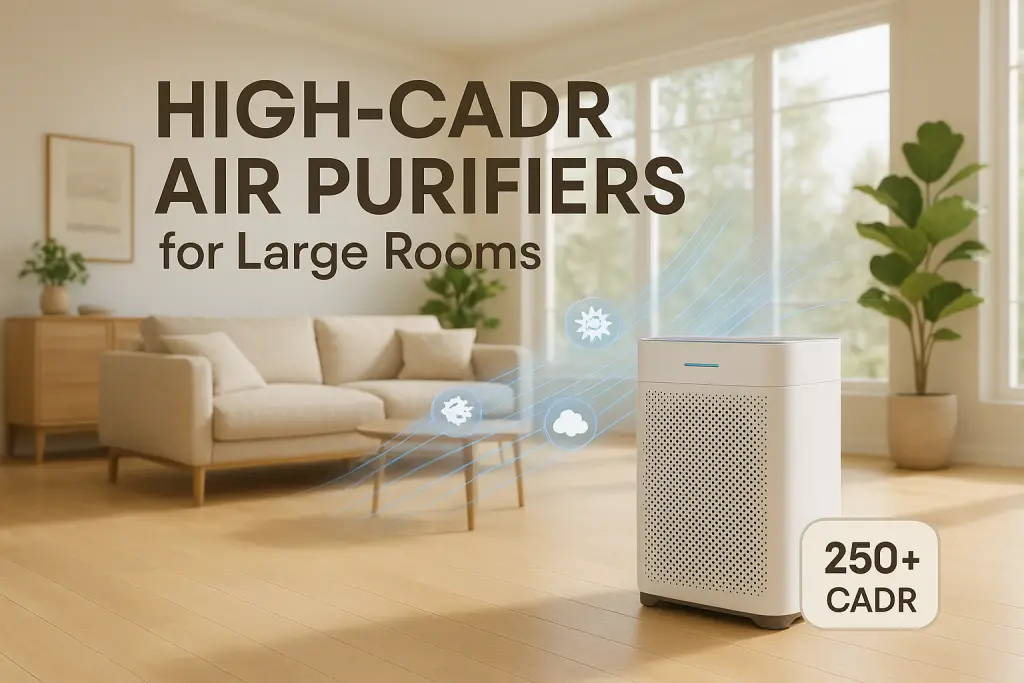Air purifier warranties often puzzle many consumers. When you’re spending $200-800 on a device meant to clean your air for years, understanding which warranties actually matter for long-term reliability becomes crucial. Not all warranty features equally indicate quality or durability. Based on engineering analysis and consumer data, motor warranties and electronic component coverage provide the strongest correlation with long-term reliability. This article breaks down exactly which warranty elements deserve your attention when investing in an air purifier, how to evaluate warranty terms beyond marketing claims, and what they reveal about product longevity.
Understanding Air Purifier Warranty Basics: What’s Actually Covered?
Before assessing which warranty features truly matter, it’s essential to understand what standard air purifier warranties typically cover and what they often exclude. Most manufacturers offer warranties ranging from 1-5 years, with premium brands occasionally providing extended or even lifetime coverage for specific components.
Limited warranties represent the industry standard for air purifiers. Unlike full warranties, these restrict coverage to manufacturing defects and specific components while excluding others. This distinction matters significantly when problems arise. The average air purifier lifespan ranges from 5-10 years, yet most warranties only cover 1-3 years, creating a potential protection gap during later years when failures become more common.
Most warranties require product registration within 30 days of purchase to activate full coverage. Without proper registration, many manufacturers provide only basic coverage or shorter warranty periods, despite what marketing materials might suggest.
Common Air Purifier Warranty Exclusions and Limitations
Understanding what warranties typically exclude is just as important as knowing what they cover. These exclusions can significantly impact long-term reliability protection.
- Replacement Filters: Almost universally excluded since they’re considered consumable items
- Cosmetic Damage: Scratches, dents, or color changes that don’t affect function
- “Normal Wear and Tear”: A catch-all clause interpreted differently by each manufacturer
- Improper Use: Including use in commercial settings when intended for residential use
- Shipping Costs: Many warranties cover parts but require customers to pay for shipping
- Labor Costs: Some warranties cover parts but charge for repair labor
- Unauthorized Repairs: Opening the unit or using unauthorized service centers
Budget brands typically include more exclusions than premium brands. Red flags include overly broad “wear and tear” definitions and requirements to use only manufacturer-approved filters to maintain warranty coverage. Carefully review these limitations, as they often reveal the manufacturer’s confidence in their product’s durability.
Critical Components That Determine Air Purifier Longevity
Not all air purifier components are created equal when it comes to reliability and replacement costs. Understanding the critical mechanical elements helps identify which warranty coverage actually matters.
The motor/fan assembly represents the most crucial component affecting longevity. According to reliability data, motor failures account for approximately 60-70% of all air purifier breakdowns outside of filter replacements. Motors typically run continuously, creating constant mechanical stress. Budget purifiers often use cheaper brushed motors with a 3-5 year lifespan, while premium models feature brushless DC motors that can last 10+ years. This component difference alone can double a purifier’s useful life.
Electronic control boards rank second in failure frequency. As air purifiers increasingly incorporate smart features, touchscreens, and WiFi connectivity, electronic component reliability becomes more critical. These components typically fail due to power surges, humidity exposure, or component degradation. Control board replacements often cost $50-150, making warranty coverage for these parts significant.
Sensors that detect particulates, VOCs, or other pollutants represent another potential failure point. Their accuracy typically degrades over time, affecting purifier performance. Premium models with robust ozone-free purifier technologies and features often include better sensor components with longer lifespans.
The Motor Warranty: Why It’s The Most Critical Coverage Element
The motor is the heart of any air purifier, and its warranty coverage is the single most important indicator of manufacturer confidence in long-term reliability.
Motor failures typically occur after 3-5 years in budget models and 5-10 years in premium units. When motors fail, replacement costs range from $80-200, often making repair uneconomical compared to replacement, especially for mid-range models. Many consumers discard otherwise functional units due to motor failures.
Motor warranty length strongly correlates with engineering quality. Brands offering 5+ year motor warranties typically use higher-grade components and better engineering designs. For example, Blueair and IQAir offer 5-year warranties with explicit motor coverage, reflecting their use of commercial-grade components.
Brushless DC motors significantly outperform traditional brushed motors in longevity. These motors cost manufacturers more but result in dramatically lower failure rates. When evaluating warranties, look specifically for longer coverage periods on motor components, which indicate the manufacturer’s confidence in motor durability.
Electronic Components: The Second Most Important Warranty Consideration
After the motor, electronic components represent the second most common failure point in modern air purifiers, especially as smart features become increasingly standard.
Control board failures typically occur due to power fluctuations, humidity damage, or component degradation. As purifiers add WiFi connectivity, smartphone control, and advanced sensors, these components become more sophisticated but also introduce additional failure points. Approximately 15-20% of air purifier failures involve electronic components.
Repair costs for electronic components often range from $50-150, plus labor. Given these costs, warranty coverage for these components significantly impacts the value equation, particularly for feature-rich models. Premium brands typically offer 3-5 years of electronic component coverage, while budget brands may limit coverage to 1 year or exclude certain electronic elements entirely.
Sensor degradation represents another electronic concern. Particulate matter sensors typically maintain accuracy for 3-5 years before requiring recalibration or replacement. VOC and gas sensors often have shorter accurate lifespans of 2-3 years. Few warranties explicitly address sensor accuracy degradation, creating a potential gap between performance expectations and reality.
Which Warranties Matter for Long-Term Air Purifier Reliability?
Does a longer warranty actually indicate a more reliable air purifier? Analysis of reliability data provides some surprising answers about the correlation between warranty terms and actual longevity.
Consumer Reports reliability surveys and independent engineering analyses show a strong positive correlation between warranty length and actual reliability, but with important nuances. Purifiers with 5-year warranties demonstrate approximately 30% fewer failures within their first five years compared to those with 1-2 year warranties. However, this correlation strengthens significantly when examining component-specific warranties rather than overall coverage periods.
Motor-specific warranties show the strongest correlation with long-term reliability. Units with 5+ year motor warranties demonstrate failure rates of less than 10% within their first five years, compared to 25-30% for units with standard 1-2 year warranties.
Interestingly, extended warranties purchased separately show almost no correlation with improved reliability. These add-on warranties typically represent revenue opportunities for retailers rather than indicators of manufacturer confidence.
When comparing warranty terms across price tiers, premium brands ($300-800) typically offer 3-5 year coverage, mid-range brands ($150-300) offer 2-3 years, and budget options (<$150) provide just 1-2 years. This tiering closely tracks actual reliability data across these segments.
Case Study: Brands With Best Warranty-to-Reliability Ratios
Examining specific brands reveals which companies offer warranties that truly reflect their products’ reliability rather than just marketing promises.
IQAir stands out with its 10-year limited warranty covering both parts and labor for its premium air purifiers. Their actual reliability data supports this confidence, with reported average lifespans exceeding 10 years and first-year failure rates below 2%. Their warranty explicitly covers motor and electronic components, aligning with the most critical failure points.
Coway offers a 5-year limited warranty on most models that includes comprehensive motor coverage. Their actual reliability metrics show average unit lifespans of 7-8 years with first-five-year failure rates of approximately 8%. Warranty claim approval rates for Coway consistently exceed 85%, indicating strong customer service support for warranty issues. For households dealing with significant allergies and asthma triggers requiring reliable filtration, this consistency matters tremendously.
In the mid-range category, Winix provides 2-year warranties but demonstrates customer-friendly claim processes with approval rates above 80%. Their actual reliability slightly outperforms their warranty period, with average lifespans of 4-5 years. This indicates a conservative warranty approach rather than reliability concerns.
Comparing lifetime ownership costs reveals premium brands with longer warranties often prove more economical over 10 years. For example, a $500 unit with a 5-year warranty and 8-year average lifespan costs approximately $62.50 per year, while a $200 unit with a 2-year warranty and 4-year lifespan costs $50 per year plus the inconvenience of more frequent replacements.
How to Evaluate Air Purifier Warranties Beyond Marketing Claims
Looking beyond marketing claims requires understanding which warranty elements actually provide meaningful protection and indicate superior reliability.
Follow this evaluation framework when assessing air purifier warranties:
- Identify Component-Specific Coverage: Look for explicit mention of motor and electronic component coverage rather than general “limited warranty” language.
- Check Warranty Length by Component: The best warranties specify different coverage periods for different parts rather than a single blanket term.
- Review Exclusions Carefully: Fewer exclusions typically indicate greater manufacturer confidence. Watch for overly broad “wear and tear” clauses.
- Assess Shipping and Labor Terms: Warranties covering both parts and labor offer substantially more value than parts-only coverage.
- Verify Registration Requirements: Understand what coverage exists without registration versus with proper registration.
Red flags that indicate potential reliability concerns include:
- Warranties shorter than industry standards for the price tier
- Numerous or unusual exclusions
- Warranty terms that change significantly after registration
- Lack of specific coverage for motors and electronic components
- Requirements to use only manufacturer filters to maintain warranty
When comparing models, prioritize warranties that specifically cover the motor for 3+ years, include electronic components for 2+ years, and offer labor coverage rather than just parts. These elements provide the strongest correlation with actual reliability and value.
Warranty Registration: Requirements, Benefits, and Legal Rights
Most manufacturers require warranty registration, but the process, benefits, and legal implications vary significantly by brand and jurisdiction.
Under the Magnuson-Moss Warranty Act in the United States, manufacturers must honor the basic warranty terms even without registration. However, many companies offer “enhanced” warranty benefits only to registered products. This practice creates a two-tier warranty system: basic coverage for unregistered products and extended coverage for registered ones.
Registration timeframes typically range from 30-90 days after purchase. Missing this window often results in default to basic coverage. To maximize protection, register immediately after purchase using both online and mail-in options when available.
Always save a copy of registration confirmation, original purchase receipt, and complete warranty documentation. Create a digital backup of these documents, as claims often occur years after purchase when paper documents might be lost. Some manufacturers now offer app-based warranty registration and tracking, which simplifies this process.
State laws sometimes provide additional warranty protections. California, for example, requires manufacturers to honor warranties even when third-party replacement parts are used, provided those parts didn’t cause the failure.
The Warranty Claim Process: Brand Comparison and Success Rates
The true test of any warranty isn’t just the written terms, but how easily and successfully consumers can make claims when problems arise.
Warranty claim success rates vary dramatically by brand. Based on consumer survey data and manufacturer reporting:
- Premium brands (IQAir, Blueair, Austin Air): 85-90% claim approval rates
- Mid-range brands (Coway, Winix, Honeywell): 70-85% approval rates
- Budget brands: 50-70% approval rates
Processing times also differ significantly. Premium brands typically resolve claims within 5-10 business days, while budget brands may take 15-30 days or longer. These differences matter tremendously when you’re without an air purifier during pollution events or choosing between masks and functioning purifiers during poor air quality periods.
Common reasons for warranty claim denials include:
- Lack of proof of purchase or registration
- Use of third-party filters or accessories
- Missing maintenance records
- Damage classified as “normal wear and tear”
- Commercial use of residential models
Customer service quality for warranty claims varies tremendously by brand. Dyson and Coway consistently rank highest for warranty service satisfaction, with dedicated support teams and streamlined processes. Budget brands typically operate with more limited support resources, resulting in longer wait times and more documentation requirements.
The best warranty processes offer advanced replacement options, sending a replacement unit before receiving the defective one. This feature proves particularly valuable for those with medical needs for air filtration, such as asthma or allergy sufferers, as it eliminates gaps in coverage.
Step-by-Step Guide to Filing a Successful Air Purifier Warranty Claim
Filing a successful warranty claim requires proper documentation, correct procedures, and persistence. Follow these steps to maximize your chances of warranty service approval.
- Gather Documentation: Collect your purchase receipt, warranty registration confirmation, maintenance records, and product serial number before contacting the manufacturer.
- Document the Issue: Take clear photos or videos showing the malfunction. For electronic or performance issues, record the specific symptoms and any error codes displayed.
- Contact Customer Support: Most manufacturers prefer claims initiated through their website support forms rather than phone calls. This creates a documented case number for tracking.
- Be Specific About the Problem: Describe the exact issue using technical terms when possible. “Motor makes grinding noise during operation” provides more actionable information than “unit doesn’t work properly.”
- Reference Warranty Terms: Specifically mention relevant warranty coverage that applies to your situation.
- Request Clear Next Steps: Get specific information about what happens next, including timeframes, shipping procedures, and tracking numbers.
- Follow Up Regularly: If you don’t receive updates within the stated timeframe, follow up every 2-3 business days until resolution.
- Document All Communication: Save emails, chat transcripts, and notes from phone conversations, including representative names and case numbers.
For denied claims, request a written explanation citing the specific warranty clause that applies. Approximately 15-20% of initially denied claims get approved upon appeal, particularly when consumers can demonstrate proper maintenance and normal usage patterns.
Extended Warranties and Protection Plans: Are They Worth the Cost?
Retailers and manufacturers often offer extended warranties at additional cost, but their value depends on several factors specific to air purifiers.
Extended warranty pricing typically ranges from 10-20% of the product price per year of additional coverage. For a $300 air purifier, this means $30-60 annually for extended protection. Analysis of failure rate data shows most air purifier issues occur either in the first year (manufacturing defects covered by standard warranty) or after 4-5 years (when components reach end of normal lifespan).
Manufacturer-direct extended warranties generally provide better value than retailer plans. They typically offer the same service network as the original warranty and include fewer exclusions. Retailer plans often use third-party service providers with varying quality and may include additional limitations not present in the original warranty.
The value equation changes significantly for different air purifier price points:
- Budget Models ($50-150): Extended warranties rarely make financial sense since replacement costs approach the warranty price.
- Mid-Range Models ($150-300): Extended coverage may provide value if it explicitly covers the motor and electronic components for years 3-5.
- Premium Models ($300-800+): Extended coverage can be worthwhile, particularly for units with specialized or proprietary components that are expensive to replace.
For most households seeking whole-home versus room-specific purification solutions, the decision comes down to individual usage patterns and value. Extended warranties make more sense for purifiers running continuously in challenging environments (high pollution, humidity, or pet households) than for occasionally used units.
Credit Card Extended Warranty Benefits for Air Purifiers
Many credit cards offer complimentary extended warranty protection that duplicates paid warranty plans, potentially saving hundreds in unnecessary coverage costs.
Major credit cards typically extend the manufacturer’s warranty by 1-2 years at no additional cost when the purchase is made with that card. This benefit often provides coverage identical to the original warranty terms. For air purifiers in the $200-500 range, this benefit can be worth $40-100 in equivalent protection.
Credit card warranty coverage success rates average 60-75%, slightly lower than manufacturer warranties but significantly better than many third-party extended warranty plans. Claims typically require:
- Original purchase receipt
- Credit card statement showing the purchase
- Manufacturer’s warranty documentation
- Repair estimate or documentation of the issue
This coverage works best for clear-cut mechanical failures rather than performance degradation issues. Premium cards like American Express Platinum, Chase Sapphire Reserve, and certain Citi cards offer the strongest protection with dedicated claims departments and higher approval rates.
Importantly, credit card coverage begins after the manufacturer’s warranty expires, effectively extending rather than duplicating protection. For air purifiers with 2-3 year warranties, this can provide total coverage of 3-5 years without additional cost.
Maintenance Requirements to Maintain Warranty Coverage
Most warranties include maintenance requirements that, if not followed, can void coverage. Understanding and following these requirements is essential for long-term protection.
Filter replacement represents the most common maintenance requirement affecting warranty status. Many manufacturers specify maximum intervals between filter replacements, typically 3-12 months depending on the model and filter type. Some even require the use of official brand filters rather than third-party alternatives.
Premium brands like IQAir, Blueair and Austin Air include filter usage indicators that record actual filter lifespan based on usage patterns rather than calendar time. These systems provide more accurate maintenance guidance and create verifiable records for warranty claims.
Environmental considerations also affect warranty compliance. Using purifiers in environments outside their specified parameters (such as high humidity, extreme temperatures, or commercial settings) can void warranty protection. These limitations are particularly important when using air purifiers designed to handle specific contaminants like incense smoke or other challenging pollutants.
Regular cleaning requirements also apply to most warranties. Dust accumulation on intakes, sensors, and internal components can cause overheating and premature failure. Most manufacturers recommend monthly exterior cleaning and quarterly intake/outlet cleaning to maintain proper airflow.
Documenting all maintenance becomes crucial for warranty claims. Create and maintain a simple maintenance log showing filter replacement dates, cleaning activities, and any performance observations. This documentation significantly improves warranty claim success rates when issues arise.
Maintenance Documentation Best Practices for Warranty Protection
Proper documentation of maintenance is crucial for warranty claims, particularly for high-value air purifiers. These documentation practices help ensure warranty coverage remains valid.
Create a digital maintenance log containing:
- Purchase date and location
- Model and serial number
- Warranty registration confirmation
- Filter replacement dates with filter model numbers
- Cleaning activities with dates
- Any performance changes or error codes observed
- Photos of the unit showing proper placement and condition
Save all filter purchase receipts, either digitally or physically. Many manufacturers require proof of filter replacement using original filters during the warranty period. Taking photos of used filters next to new replacement filters before changing provides additional documentation of proper maintenance.
For smartphone-controlled purifiers, screenshot the maintenance screens showing filter life, usage statistics, and any system notifications. These screenshots provide timestamp-verified records of the unit’s condition and maintenance status.
Consider using free maintenance tracking apps like SnappyHomePro or HomeZada to create automated reminders and documentation systems. These tools can generate maintenance reports useful for warranty claims.
When communicating with manufacturer support about any issues, even minor ones, request an email summary of the conversation for your records. These communications establish a history of proper use and maintenance that strengthens future warranty claims.
Warranty Considerations for Special Circumstances and Environments
Air purifiers used in specific environments or circumstances face unique reliability challenges, affecting both warranty coverage and long-term performance.
Commercial use of residential air purifiers almost universally voids standard warranty coverage. Manufacturers design residential units for 8-12 hours of daily operation, while commercial settings often require 24/7 operation. If you need purification for a small business or office, look specifically for commercial-rated units with appropriate warranties, which typically cost 30-50% more but include more robust components and better warranty protection.
High-pollution environments such as construction zones, wildfire-affected areas, or homes undergoing renovation accelerate filter loading and increase motor strain. While these conditions don’t typically void warranties, they can lead to faster component wear. For these environments, consider units with oversized motors and multi-stage filtration that can handle heavier particulate loads without strain.
For bedroom environments where quiet operation is essential, motor warranties become even more critical. Noise-optimized purifiers often operate their motors at lower speeds to reduce sound, potentially extending motor life but sometimes sacrificing cleaning performance. The warranty should specifically cover motor and fan assembly components for these specialized units.
Households with pets face unique challenges with hair and dander accumulation on pre-filters and intakes. Most warranties cover motor failures even in pet households, but require more frequent cleaning and maintenance documentation. Some premium brands offer pet-specific models with enhanced pre-filtration and more robust motors designed for these conditions.
Coastal or high-humidity environments accelerate electronic component corrosion and can affect sensor accuracy. Look for purifiers with humidity-resistant circuit boards and sealed electronic compartments. IQAir and Austin Air offer models specifically designed with corrosion-resistant components for these challenging environments.
Conclusion: Identifying Warranties That Truly Protect Your Investment
After analyzing the relationship between warranties and reliability, several clear patterns emerge to guide your air purifier investment decisions.
The most meaningful warranty elements that correlate with long-term reliability include:
- Motor-specific coverage of 5+ years: The strongest indicator of engineering quality and durability
- Electronic component coverage of 3+ years: Reflects confidence in circuit design and component quality
- Labor coverage throughout the warranty period: Demonstrates commitment to complete customer support
- Straightforward claim processes: Indicates company-wide focus on customer satisfaction
- Fewer exclusions and limitations: Shows manufacturer confidence in product reliability
Premium brands generally provide warranties that better reflect actual reliability, with IQAir, Blueair, and Austin Air offering the strongest correlation between warranty terms and long-term performance. Mid-range options from Coway, Winix, and Levoit often provide the best value-to-warranty ratio.
Beyond the warranty itself, look for manufacturing date codes on units, preferring recently manufactured models even when purchasing established designs. Component quality and manufacturing processes improve over a product’s lifecycle, typically resulting in better reliability for newer production runs.
For the best long-term protection, combine a strong manufacturer warranty with credit card extended coverage rather than purchasing retailer protection plans. This strategy maximizes protection while minimizing additional costs.
Remember that no warranty can completely protect against all failures, but those with focused component coverage, reasonable maintenance requirements, and straightforward claim processes provide the strongest indicators of products designed for years of reliable operation, especially in noise-sensitive areas like bedrooms where consistent performance matters most.
| Photo | Air Purifier Model | Best for | Price |
|---|---|---|---|

|
WINIX A231 Air Purifier | Asthma & Indoor Pollution | Check Price On Amazon |

|
Rabbit Air, A3 SPA-1000N Air Purifier | Pet Dander & Odors | Check Price On Amazon |

|
LEVOIT Air Purifier | Best Overall | Check Price On Amazon |

|
GermGuardian Air Purifier | Cigarette & Cooking Smoke | Check Price On Amazon |

|
Coway Airmega Air Purifier | New-borns | Check Price On Amazon |

|
BLUEAIR Air Purifier | Germ & Virus Control | Check Price On Amazon |
